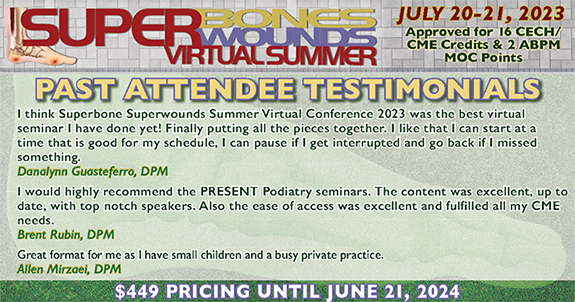
Practice Perfect 917
Sleep Apnea: Don’t Fall Asleep on Your Patients!
Sleep Apnea: Don’t Fall Asleep on Your Patients!

Not long ago, we completed our short series on the perioperative management of podiatric patients. Just when I thought we were being comprehensive, a patient came into the office for his preoperative visit that demonstrated my lack of completeness. I didn’t discuss the perioperative management of sleep apnea! Let’s get right to this important perioperative medical issue to keep us from falling asleep behind the wheel, so to speak. The following recommendations are based on the citations below.1,2
What’s the Big Deal About Obstructive Sleep Apnea (OSA)?
- Why should we worry about sleep apnea in our patients? Is it a big deal if they’re already under anesthesia with a protected airway? The answer is, yes, it does matter! Without going down too deep a rabbit hole, we know patients with sleep apnea are at increased risk of complications. In fact, OSA is an independent risk factor for difficult intubation and/or mask ventilation.2 Patients with obesity or craniofacial abnormalities may have narrower airways that are more collapsible secondary to decreased airway tone. This leads to an increased risk of perioperative respiratory complications.
Obstructive Sleep Apnea – The Perioperative Risks & Recommendations
- An increased risk of excessive sedation, hypoxia, and respiratory failure postprocedure is present with the following:
- Neuromuscular blocking agents
- Opioids
- Propofol
- Benzodiazepines
- Recommend regional over general anesthesia whenever possible.
- Multimodal anesthesia to decrease the need for opioids.
- Supplemental postoperative oxygen until normal oxygen saturation levels on room air.
- Nonsupine positions during anesthesia recovery whenever possible.
- Continuous Positive Airway Pressure (CPAP) should be used throughout hospital stays.
- Consider inpatient surgery if the risks are high but surgery cannot be postponed.
The Preoperative Risk Evaluation
As with everything periop, the history and physical are key to safe patient care. Since polysomnography (AKA the “sleep study”) is not particularly efficient for perioperative medicine, it is recommended instead to utilize the history and physical and risk evaluation tools in these patients.
- Ask about sleep apnea during all preop histories and physicals. Remember, it’s not just obese patients that may suffer from this disorder since upper airway disorders may also lead to OSA.
- Some important components of the review of systems include disrupted sleep, daytime hypersomnolence, snoring, and morning headaches, witnessed apneic (temporary breathing cessation) episodes or hypopnea (shallow breathing).
- Consider using the STOP-Bang Questionnaire3:
- Snoring
- Tiredness
- Observed Apnea
- Pressure (AKA blood pressure)
- Body Mass Index
- Age
- Neck Circumference (shirt collar size > 17 inches in males and > 16 inches in females)
- Gender
Most experts agree that surgery does not have to be postponed unless there are additional concerning comorbidities such as diabetes or cardiovascular disease.
With a cautious approach, always considering the patient’s health, and a comprehensive history and physical, those patients with OSA may still undergo relatively safe surgery in the right circumstances.
Best wishes.

Jarrod Shapiro, DPM
PRESENT Practice Perfect Editor
[email protected]

-
Cozowicz C, Memtsoudis SG. Perioperative Management of the Patient With Obstructive Sleep Apnea: A Narrative Review. Anesth Analg. 2021 May 1;132(5):1231-1243.
Follow this link -
Memtsoudis SG, Cozowicz C, Nagappa M, et al. Society of Anesthesia and Sleep Medicine Guideline on Intraoperative Management of Adult Patients With Obstructive Sleep Apnea. Anesth Analg. 2018 Oct;127(4):967-987.
Follow this link -
Chung F, Abdullah HR, Liao P. STOP-Bang Questionnaire: A Practical Approach to Screen for Obstructive Sleep Apnea. Chest. 2016 Mar;149(3):631-638.
Follow this link































Comments
There are 0 comments for this article